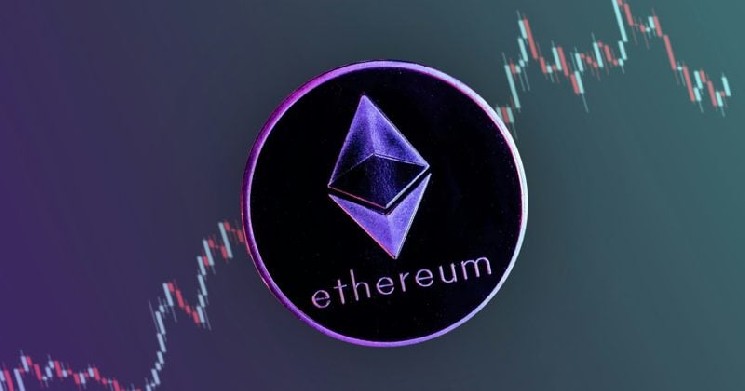The median and average size of new funds in 2024 hit the lowest level since 2017.
Written by: Alex Thorn, Gabe Parker, Galaxy
Compiled by: Luffy, Foresight News
Since March this year, Bitcoin has been in a range-bound state, and other major liquid cryptocurrencies have also failed to return to their historical highs. In this context, venture capital activity has been somewhat sluggish this year. In the "barbell market", Bitcoin has been leading the way, while Memecoins have been driving activity at the other end of the barbell, and with little interest from large asset managers and traditional venture funds, the crypto venture capital market has been lukewarm throughout 2024. Nevertheless, opportunities abound, and crypto-native institutions are at the forefront of investment activity. Expectations of falling interest rates and a relaxed regulatory environment may accelerate venture capital activity in the fourth quarter of this year and the first quarter of next year. Our quarterly report, using research from public documents, data providers like Pitchbook, and the VisionTrack fund performance database from Galaxy Research, analyzes two aspects of the crypto venture capital market: venture capital investment in crypto startups, and institutional investors' asset allocation to venture funds.
Key Highlights
- In Q3 2024, crypto startups raised a total of 478 venture deals (down 17% QoQ) with $2.4 billion in investment (down 20% QoQ).
- Over the past three quarters, venture firms have invested $8 billion in crypto startups, and investment is expected to be flat or slightly higher in 2024 compared to 2023.
- Early-stage rounds accounted for the majority of capital investment (85%), with late-stage rounds at only 15%, the lowest level since Q1 2020.
- The median valuation of venture deals increased in both Q2 and Q3, rising faster than the overall venture capital industry. The median valuation in Q3 2024 was $23.8 million, slightly lower than the $25 million in Q2.
- Layer 1 projects and companies raised the most funding, followed by crypto exchanges and infrastructure companies, with most investments going to infrastructure, gaming, and DeFi projects and companies.
- The US continues to dominate the crypto venture capital market, with the majority of capital invested (56%) and deals (44%) involving US-headquartered companies.
- On the fundraising side, interest from asset allocators remains lukewarm, with only 8 new funds raising $140 million in Q3 2024.
- The median size of crypto venture funds continues to decline, with the median (40 million) and average (67 million) of new funds in 2024 hitting the lowest level since 2017.
Venture Capital
Deal Volume and Investment Capital
In Q3 2024, venture investors invested $2.4 billion (down 20% QoQ) across 478 deals (down 17% QoQ) in crypto and blockchain-focused startups.

Venture investment is expected to reach or slightly exceed 2023 levels in 2024.

Investment Capital and Bitcoin Price
The long-standing correlation between Bitcoin price and capital invested in crypto startups has been broken. Since January 2023, Bitcoin has seen a significant rally, while venture activity has not kept pace. Weak interest from asset managers in crypto venture, combined with a market narrative skewed towards Bitcoin and away from many of the hot narratives since 2021, can partially explain the decoupling of investment capital and Bitcoin price.

Investment Stages
In Q3 2024, 85% of venture investment went to early-stage companies, while 15% went to late-stage companies. Crypto-native funds may still have capital from their large fundraises a few years ago, allowing them to seek out new opportunities arising from the resurgence of cryptocurrencies.

In terms of deals, the share of pre-seed deals has slightly declined, but remains healthy compared to previous cycles.

Valuations and Deal Sizes
In 2023, valuations of venture-backed crypto companies plummeted, reaching their lowest level since the end of 2020 in Q4 2023. However, with Bitcoin reaching new all-time highs, valuations and deal sizes have rebounded since Q2 2024. In Q2 and Q3 2024, valuations reached their highest levels since 2022. While the crypto rebound has been stronger, the growth in deal sizes and valuations in Q2 and Q3 has been consistent with the overall venture capital industry. The median pre-money valuation for deals in Q3 was $23 million, with an average deal size of $3.5 million.

Investment Sector Breakdown
In Q3 2024, the "Trading/Exchange/Investment/Lending" category of companies and projects raised the largest share of crypto venture capital at 18.43%, totaling $462.3 million. The two largest deals in this category were Cryptospherex and Figure Markets, raising $200 million and $73.3 million, respectively.

In Q3 2024, funding for crypto startups building AI services grew 5x quarter-over-quarter. Sentient, CeTi, and Sahara AI were major contributors in this space, raising $85 million, $60 million, and $43 million, respectively. Investment in Trading/Exchange/Investment/Lending and Layer 1 crypto projects also grew 50% quarter-over-quarter. Investment in Web3/Non-Fungible Token/Decentralized Autonomous Organization/Metaverse/Gaming projects decreased by 39%, the largest quarter-over-quarter decline across all categories.

If we further break down the larger categories in the chart above, Layer 1 projects raised the most crypto venture capital in Q3 2024 at 13.6%, totaling $341 million. The top two Layer 1 deals (Exochain and Story Protocol) accounted for $183 million, or 54% of the total Layer 1 venture capital in Q3 2024. Following Layer 1, crypto exchanges and infrastructure companies raised the second and third most venture capital at $265.4 million and $258 million, respectively.

In terms of deal count, Web3/Non-Fungible Token/Decentralized Autonomous Organization/Metaverse/Gaming led with 25% of deals (120 deals), up 30% quarter-over-quarter. The largest gaming deal in Q3 2024 was Firefly Blockchain, which raised $50 million in a Series B round.

Crypto infrastructure projects and companies ranked second in deal count, accounting for 16.5% of total deals (79 deals), up 12% quarter-over-quarter. Trading/Exchange/Investment/Lending projects and companies ranked third in deal count, accounting for 11.5% of total deals (55 deals). Notably, the media/education and data categories saw the largest quarter-over-quarter declines in deal count, down 73% and 57%, respectively.

The major categories are further divided into more refined sub-markets, with crypto infrastructure projects and companies having the most transactions (64) across all categories. Closely followed are crypto companies related to gaming and DeFi, which completed 48 and 38 transactions respectively in the third quarter of 2024.

Investment Categorized by Company Rounds and Categories
Categorizing investment capital and transaction volume by category and stage provides a clearer understanding of the types of companies raising funds in each category. In the third quarter of 2024, the vast majority of capital went to early-stage companies and projects in Layer 1, enterprise blockchain, and DeFi. In contrast, a significant portion of crypto venture capital funding for mining went to late-stage companies.

Analyzing the distribution of investment capital across different stages within each category can reveal the relative maturity of various investment opportunities.

Similar to the crypto venture capital in the second quarter of 2024, a large portion of the transactions completed in the third quarter involved early-stage companies. The total volume of late-stage crypto venture capital transactions across all categories was similar to the second quarter of 2024.

Analyzing the share of transactions completed by company stage within each category can provide deeper insights into the different stages of each investable category.

Investment Categorized by Company Locations
In the third quarter of 2024, 43.5% of the transactions involved companies headquartered in the United States, followed by Singapore (8.7%), the United Kingdom (6.8%), the United Arab Emirates (3.8%), and Switzerland (3%).

Companies headquartered in the United States attracted 56% of the total venture capital, a slight increase of 5% quarter-over-quarter. The United Kingdom accounted for 11%, Singapore for 7%, and Hong Kong for 4%.

Investment and Company Age
Companies and projects founded in 2021 received the most funding, while those founded in 2022 had the most transactions.

Crypto Venture Fund Fundraising
Fundraising for crypto venture funds remains challenging. The macroeconomic environment and volatility in the crypto market in 2022 and 2023 have made some asset managers reluctant to commit to crypto venture funds at the same level as in 2021 and early 2022. By early 2024, investors generally expected interest rates to decline significantly in 2024, although the rate cuts did not start until the second half of the year. Total capital allocated to venture funds has continued to decline since the third quarter of 2023, and the amount of new funds raised in the third quarter of 2024 reached the lowest level since the third quarter of 2020.

2024 is expected to be the weakest year for crypto venture capital fundraising since 2020, with only 39 new funds raising $1.95 billion, far below the frenzy of 2021-2022.

The decline in asset manager interest has led to fewer new crypto venture capital funds being raised, and the funds raised are smaller in size, with the median and average fund size in 2024 (as of the third quarter) reaching the lowest levels since 2017.

Conclusion
The current crypto venture capital market sentiment and activity is far below bull market levels. While the crypto market has emerged from the lows of late 2022 and early 2023, venture capital activity has not rebounded. The bull market performances of 2017 and 2021 showed a high correlation between venture capital activity and the liquidity of crypto asset prices, but over the past two years, venture capital activity has remained depressed while crypto currencies have been rising. The stagnation in venture capital is due to a variety of factors, including the "barbell market" with Bitcoin (and its new ETFs) at the center, and the marginal net new activity from Memecoins, which are difficult to attract venture capital funding.
Early-stage transactions continue to dominate the market. Despite the headwinds in venture capital, the continued interest in early-stage transactions bodes well for the long-term health of the broader crypto ecosystem. While late-stage companies are struggling to raise funds, entrepreneurs are still finding investors willing to back new innovative ideas. In the challenging fundraising environment, projects and companies building Layer 1, scaling solutions, gaming, and infrastructure have all secured good financing.
Bitcoin ETFs may put pressure on funds and startups. High-profile investments in spot Bitcoin ETFs by US asset managers suggest that some large investors (pension funds, endowments, hedge funds, etc.) may be turning to large, liquid instruments to gain exposure to the crypto industry, rather than seeking early-stage venture capital. While interest in a new spot Ethereum ETF has been very limited so far, an Ethereum ETF could also attract more attention if demand for investment in broader crypto categories like DeFi and Web3 increases.
Although some new, smaller funds have started to raise capital, fund managers still face a difficult environment. The number of new funds launched and the capital allocated to these funds in the third quarter were at the lowest levels in 4 years (since the third quarter of 2020). With fewer new, smaller funds being raised, traditional venture capital firms and asset managers remain relatively inactive in the market, which may continue to pose challenges for late-stage companies seeking funding. If US regulation of digital assets is significantly relaxed after the November 5th presidential election, late-stage companies may be able to utilize public markets as an alternative.
The United States continues to dominate the crypto startup ecosystem. Despite a hostile regulatory environment, companies and projects headquartered in the US still attract the most capital. If the US wants to maintain its position as a center of technological innovation, policymakers should be aware of how their actions or inaction will impact the crypto and blockchain ecosystem. Good news may be on the horizon, as former President Donald Trump and current Vice President Kamala Harris have both expressed support for the industry.







